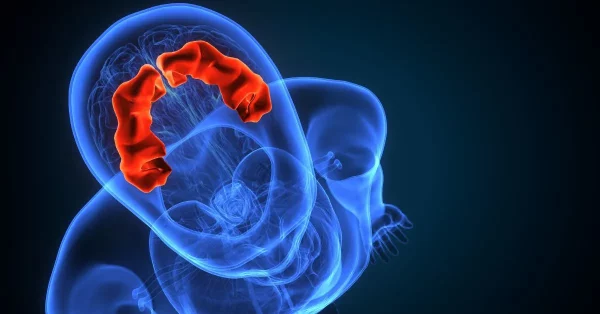Chronic traumatic encephalopathy (CTE) is a progressive neurological condition associated with repeated traumatic brain injuries. While it has gathered widespread attention because of its relation to sports-related injuries, much about CTEs has yet to be understood.
To help you understand what is currently known about CTEs, this article will address:
Causes of CTE: Chronic Traumatic Encephalopathy
While each CTE is unique, the common cause underlying all CTEs is repeated traumatic brain injuries.
The concept that repeated blows to the head might induce a neurodegenerative condition is not new. When a head injury is neurodegenerative, it means that it worsens over time due to progressive damage to brain cells.
This condition has historically been referred to as “punch drunk” syndrome because it was most commonly associated with boxing injuries. However, similar occurrences have also been observed in other individuals who have been exposed to repeated head trauma. As a result, the condition is now widely known as chronic traumatic encephalopathy (CTE).
It is unknown exactly why repeated brain injuries cause CTEs. What is known, however, is that high amounts of tau protein appear in the brain as a result of repeated TBIs. This protein develops in masses that gradually strangle the blood vessels in the brain and inhibits brain function. There is no other disease that causes these distinct changes in tau protein.
Up next, we’ll discuss major risk factors for developing CTE.
Risk Factors for CTE After Brain Injury
CTE is not the result of one or two blows to the head, but many. However, it’s important to understand that not all individuals who have had multiple brain injuries will develop CTE.
Individuals who are more likely to experience repeated blows to the head are at greatest risk for developing CTE, including:
- Individuals who play contact sports (i.e. boxing, football, soccer, ice hockey, etc.)
- Military veterans (due to exposure to explosive blasts)
- Victims of long-term physical abuse
- Individuals who demonstrate self-destructive behaviors (i.e. head banging, etc.)
Additionally, it’s suggested that even repeated mild blows to the head that do not cause any apparent secondary effects (subconcussive brain injuries) can increase one’s risk of developing CTE. Damage following even the mildest of head injuries can accumulate and potentially initiate a neurodegenerative cascade.
In the following section, we’ll discuss how CTE affects a person over time.
Signs and Symptoms of CTE
It’s believed that signs of CTE often develop years to decades after brain injury and become more severe over time. Therefore, even if you no longer engage in behaviors that can potentially cause head trauma, long-term repercussions may still occur.
Depending on the location of damage in the brain, CTE can manifest differently in each individual. Individuals may experience a wide range of symptoms [1],[2], [3] including:
- mood changes
- aggression
- depression
- suicidal thoughts
- poor impulse control
- cognitive impairments such as memory loss
- confusion
- dizziness
- parkinsonism
- speech abnormalities
- dementia
- sleep complications
If you or a loved one has had multiple traumatic brain injuries and consequently experiences any of these symptoms, speak to a physician as soon as possible.
Treatment for CTE After Brain Injury
Currently, a diagnosis of CTE can only be made after death because evidence of degeneration and the unique tau protein deposit pattern can only be seen through an autopsy. As a result, individuals who demonstrate symptoms of CTE can only be suspected of having the condition.
While there is no cure for CTE, there are treatments that may help improve one’s quality of life. By working with a team of medical professionals, individuals can focus on treating their unique symptoms and improving their functional independence.
Management interventions that may help slow down and minimize neurological decline associated with CTE include:
- Increasing physical activity
- Adopting a healthy diet
- Cognitive-behavioral therapy helps consistently stimulate cognitive functions like memory and can help individuals learn more effective ways to navigate emotional sensitivity.
- Physical therapy helps individuals improve their balance and develop better proprioception (sense of their body in relation to space).
- Occupational therapy helps retrain the brain to perform everyday activities to minimize the impact of memory loss and can include education on compensatory strategies.
- Taking medications
Ultimately, treatment should focus on keeping your brain and body as active and nourished as possible. The brain is extremely adaptive, and the more you practice the skills that may be affected by CTE, the better the outcomes.
Understanding CTE After Repeated Brain Injuries
CTE is a progressive brain disorder caused by repeated brain injuries. It is most common in individuals who play contact sports like boxing and football, as well as veterans who were repeatedly exposed to explosive blasts or other instances of head trauma.
It is distinguished from other neurodegenerative brain injuries by the way tau proteins materialize and inhibit brain function over time. While CTE cannot currently be diagnosed in living patients, there are ways to treat its potential symptoms and improve quality of life.
We hope this article helped you understand what CTEs are and the importance of avoiding head trauma as much as possible. Even mild head injuries can contribute to the development of CTE.









